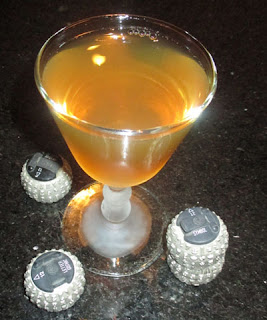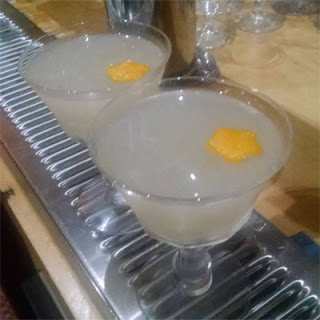2 dash Sweet Vermouth (3/4 oz Dolin)
2 dash Bourbon (3/4 oz Fighting Cock 103)
1 dash Maraschino Liqueur (3/8 oz Luxardo)
1 dash Ojen Bitters (1/8 oz Butterfly Absinthe)
Stir with ice and strain into a cocktail glass.

quality versus quantity does not have to be a winner-take-all proposition.


















Charbreux: Defunct term cited in bar books which is theorized to have been a corruption/typo for Les Peres Chartreux, the name given to Chartreuse during the period 1903-1940 when it was produced solely in Tarragona, Spain. The only reference to this product with this spelling was in a drink named the Cubano. Its first appearance was in the Savoy Cocktail Book (London 1930). In 1934, "Cocktail Bill" Boothby listed the recipe in his guide with the ingredient entirely eliminated, as did Trader Vic in 1947. Ever since, (as here,) "Charbreux" only shows up in recipe lists which draw from the Savoy book - or from the books which drew from those books!A little Green Chartreuse in the mix would not have hurt, but that was not the recipe that I had spotted that night. In the glass, the Cubano shared juniper and caraway aromas with a hint of pineapple. On the sip, sweet tropical fruit transitioned into gin and kümmel spice on the swallow with a pineapple finish.



 The theme for this month's Mixology Monday (MxMo CI) was picked by DJ Hawaiian Shirt of the Spirited Remix blog. The theme he chose was "Orange Juice," and he elaborated on his choice with his description of, "It really irritates me when people dismiss an ingredient. Whether it's too ordinary, or difficult, or inconsistent, or overpowering, I can't help but feel such conclusions are lazy and defeatist. Your theme this month is 'Orange Juice,' an ingredient I too often see derided or ignored when it comes to thoughtful mixology. Surely an assembly of such mixological brawn as MxMo can find or create a delicious way to mix OJ, right?"
The theme for this month's Mixology Monday (MxMo CI) was picked by DJ Hawaiian Shirt of the Spirited Remix blog. The theme he chose was "Orange Juice," and he elaborated on his choice with his description of, "It really irritates me when people dismiss an ingredient. Whether it's too ordinary, or difficult, or inconsistent, or overpowering, I can't help but feel such conclusions are lazy and defeatist. Your theme this month is 'Orange Juice,' an ingredient I too often see derided or ignored when it comes to thoughtful mixology. Surely an assembly of such mixological brawn as MxMo can find or create a delicious way to mix OJ, right?"
Luau DaiquriThe Luau Daiquiri began with a lime oil aroma over the rum's funk. Lime and orange paired up on the sip that led into a funky rum swallow with a vanilla finish. Indeed, the orange gave a smoothness and tropicalness to the flavor profile. However, it needed to be paired with lime juice to give the body any structure; this of course will not the case when bitter oranges such as Seville are available for a short window in January. Moreover, without the orange juice, the Luau Daiquiri would have come across like a less spiced Winter Daiquiri.
• 2 oz White Rum (Denizen)
• 3/4 oz Lime Juice
• 3/4 oz Orange Juice
• 1/2 oz Vanilla Syrup (BG Reynolds)
Shake with ice and strain into a coupe glass. Garnish with an edible orchid (lime wheel).

























 The 2017 collection of 855 drink recipes, bartender tributes, and essays on hospitality from CocktailVirgin's Frederic Yarm. Available at Barnes and Noble and Amazon.
The 2017 collection of 855 drink recipes, bartender tributes, and essays on hospitality from CocktailVirgin's Frederic Yarm. Available at Barnes and Noble and Amazon. The 2012 collection of 505 drink recipes, techniques, and Boston bar recommendations from Frederic Yarm. Available at Amazon and Barnes and Noble.
The 2012 collection of 505 drink recipes, techniques, and Boston bar recommendations from Frederic Yarm. Available at Amazon and Barnes and Noble.